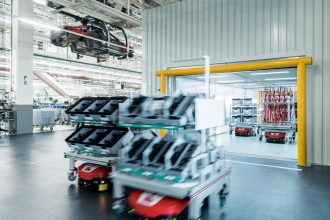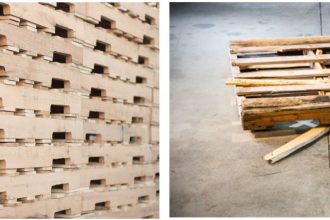Rack Guarding Protects Personnel and Products From Impacts
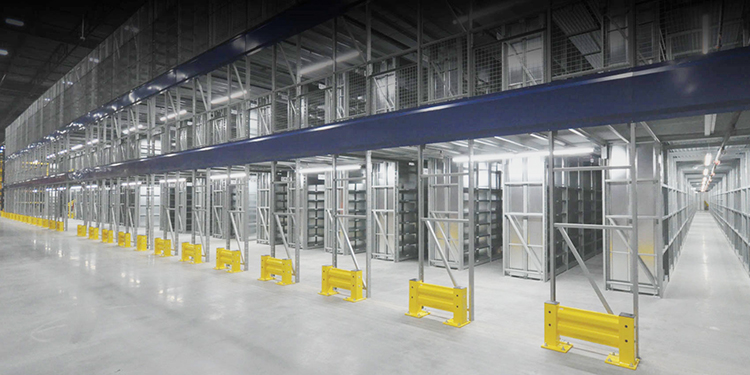
Installing industrial steel storage racks in a warehouse or distribution center is a significant investment. Therefore, it makes sense to protect the structure from accidental damage caused by forklifts or other moving equipment. Because impact damage occurs most frequently to the section of the columns below the first level of beams, it can result in a significant reduction of the structure’s load carrying capacity, which can become a serious safety issue. For that reason, shielding the rack from collisions also significantly reduces the risk of employee injuries or inventory loss due to a rack failure. Rack guarding protects personnel and products from impacts using the following methods.
Types of Rack Guarding Available
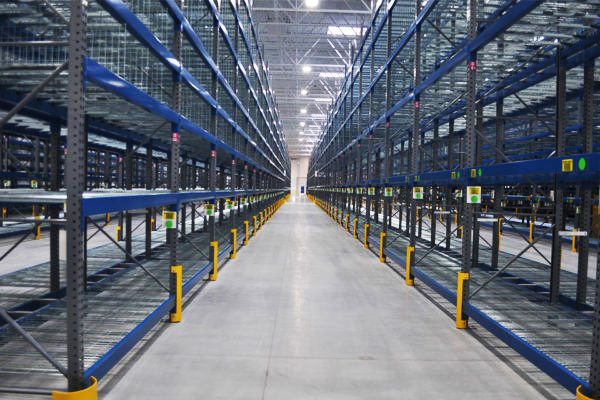
There are many types of guarding installed around racks, said Jonathan Hirst, Vice President and General Manager at North American Storage. The company is a member of the Rack Manufacturers Institute (RMI).
“Among them are solutions that protect the ends of rack rows, including cross-aisles and rack tunnel bays,” he explained. “Also available are products that reinforce or shield the aisle-side face of the upright frames. There are also physical barriers installed to separate pedestrians from vehicle traffic moving in and out of rack aisles.”
End of Rack Guarding
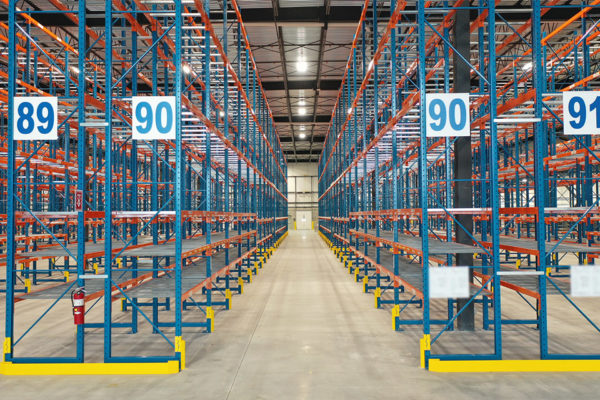
This type of rack guarding protects the ends of rack aisles from impacts as forklifts carrying loads make too tight a turn, noted Hirst.
“They also ensure pallets placed on the floor at the end of a row for staging materials aren’t placed too close to the racking or pushed into it,” he added. “Pushing a pallet into the uprights at the end of a row of rack could loosen the anchor bolts and damage the columns and frame bracing.”
Common types of guarding used at the end of rack rows include:
- Heavy, structural steel angles with welded, formed ends that wrap around the rack columns. Anchor bolts attach the angle’s horizontal leg to the floor.
- Pipe or tube formed or welded into an inverted U-shape. These guards run the full depth of the rack assembly and are factory welded to steel base plates that anchor to the floor.
- Free standing, industrial modular guard railing bolted to the floor short distance away from the racking. Installers place these rails as close to the rack as possible to minimize travel aisle encroachment.
- Guards that attach directly to the sides of the upright frames.
Column Protection
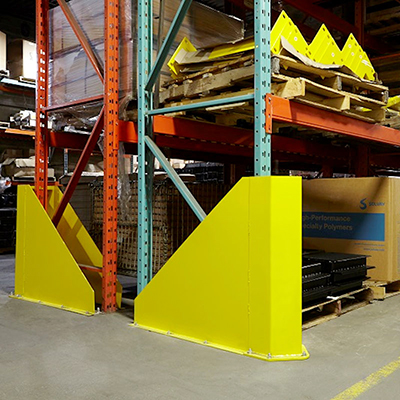
Rack guarding for column protection can prevent incidental damage from a pallet impact during placement or removal, Hirst explained. “This could bend the upright and reduce the structural integrity of the racking,” he said.
Rack guarding applied to the aisle-side facing uprights include:
- Formed steel plates — known as free standing column protectors —wrap around the face and sides of the rack column. To secure them, these guards may use direct floor anchors, a combination of floor and column attachments, or column welded during manufacture.
- Steel, foam, or plastic guards attach to the rack columns with bolts, rivets, or straps.
Pedestrian Guardrails
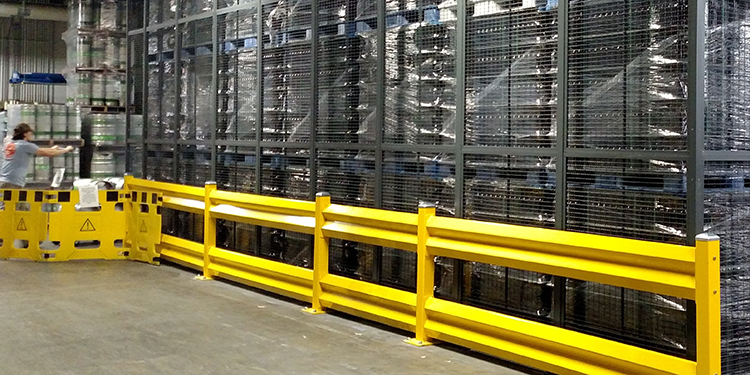
Pedestrian guardrails and barriers delineate safe walkways for facility employees away from racking, said Hirst.
“When a manufacturer is assessing guarding requirements for a rack project, they look initially at pedestrian safety first and foremost,” he explained. “Often, associate walkways to break rooms, locker rooms, or punch clocks are in close proximity to the racking. The walkways almost always require some kind of guarding to define a safe walking space.”
The barriers’ placement ensures that personnel remain a safe distance from any items that may fall from racks. They also provide barrier protection between employees and moving equipment. To ensure the pedestrian guardrail’s engineering and construction will withstand an impact, Hirst recommended purchasers review ANSI MH31.2. Developed by the Protective Guarding Manufacturers Association (ProGMA), this standard details a uniform testing methodology to assess the performance of different guardrails and barriers.
Determining Where to Install Rack Guarding
For a new system, rack guarding selection and installation placement frequently follows the workflow, noted Hirst. Rack manufacturers often recommend implementing protective guarding first in areas where employees are most likely to be.
“Then, we consider the highest traffic areas to recommend installation of end of row guarding and column guarding,” he said. “These prevent incidental damage, which can happen very quickly. Even a minor contact can result in an expensive rack repair or replacement, whereas a guard put in place can prevent those high-risk areas from incurring damage.”
Best practice is to include rack guarding when conducting routine rack inspections, Hirst continued. Observing the guarding during inspections gives insight into areas of higher risk. Any scrapes that appear on the rack guarding might indicate a need to more closely evaluate that workflow.
“Good guarding is essentially the oil that lubricates a functional warehouse,” he concluded. “It gives operations time and protection to observe their processes and make changes without incurring significant damage to core equipment — such as racks.”
Learn More About Protective Rack Guarding
Looking for more insights into protective rack guarding? RMI offers several resources and publications. The recently updated “Considerations for the Planning and Use of Industrial Steel Storage Racks” lists more than 20 different guarding options in section 3.4.2. Additionally, RMI members are available to discuss best practices and make recommendations. For more information, visit mhi.org/rmi.

